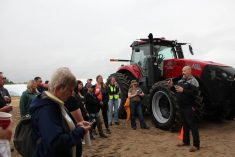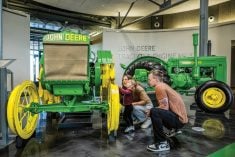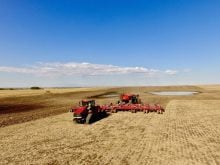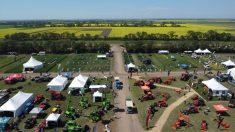As a group of students were clustered around and under a tractor, another student in the cab looked out to try and see them. It was all part of the University of Manitoba’s first tractor safety training day.
The point of the exercise was to show a class of ag students how many bind spots there are around today’s large tractors. In the end, nearly a dozen students remained out of sight from their cohort in the cab, even as he tried to spot them from the operator’s seat. That’s a problem at the heart of the ag industry’s persistent runover accident statistics.
Read Also
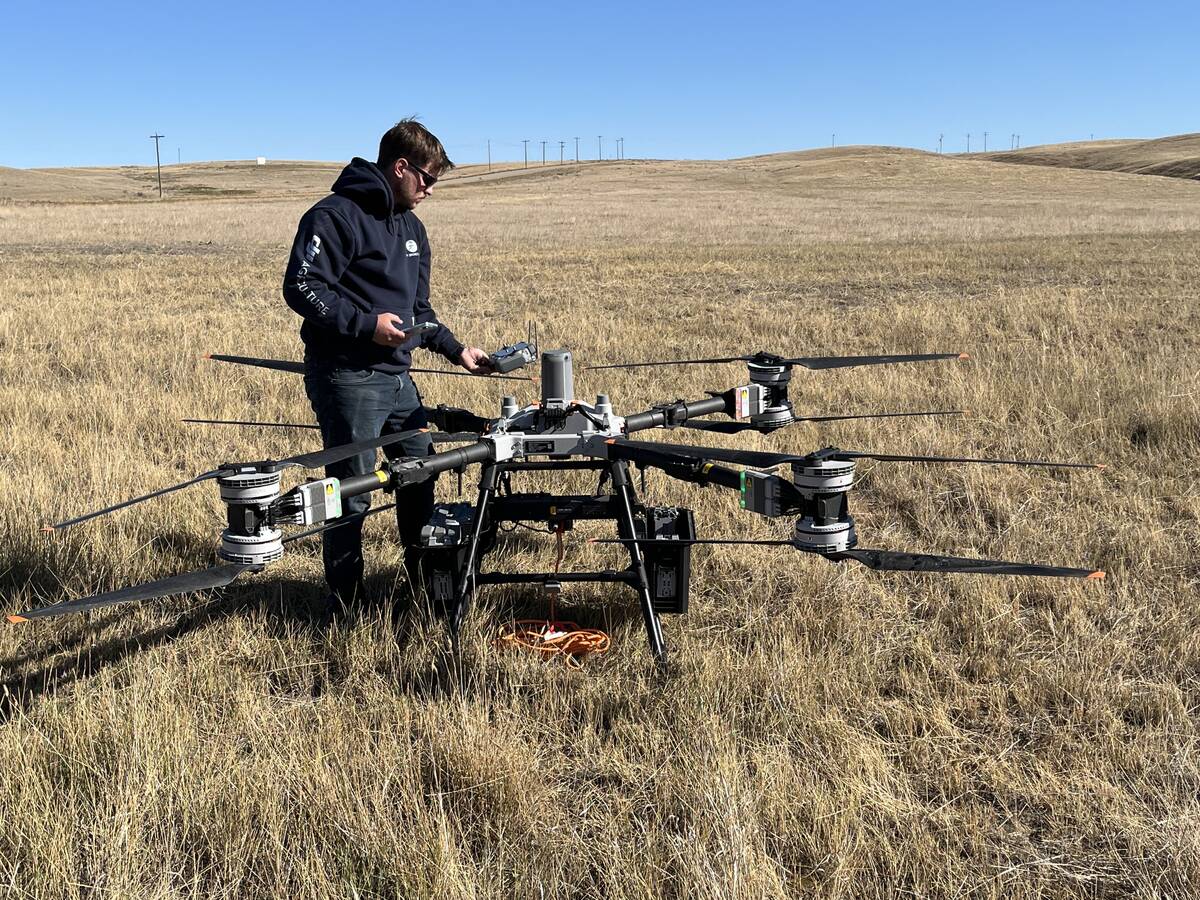
Farm-facing drone does the heavy lifting
Canadian distributor DJI Agriculture unveils its AGRAS T100 drone to western Canada’s producers for greater efficiencies in spraying and granular spreading in fields.
- Read more: U of M holds first tractor safety day
The training day was designed to identify common contributing factors, like the visibility limitations around machines, that figure prominently in on-farm accidents in the hope students will be safer farm operators after they graduate.
“We’re hoping to be able to offer this to ag students every year,” explained Thea Green, instructor and coordinator of farm safety projects at the U. of M.’s School of Agriculture. “We’d also like to be able to make this available to producers.”
As they returned to their chairs from their hide-and-seek exercise, Green asked students how they might overcome the risk of running over unseen persons who might be standing near or working on a large machine. “Walk around the tractor before starting it,” was their clear conclusion. Wearing high visibility vests also made it easier to spot people partially hidden by the machine, noted the student in the cab.
But with pressure on producers to get work done within a short time window, safety procedures like that, even if people are aware of the need for them, often get ignored. And even with the myriad of safety features built into today’s equipment, machinery-related injuries and deaths continue to happen.
“Farmers have a tendency to bypass the engineering,” said Green, sadly. “That’s why we need the education component.”





